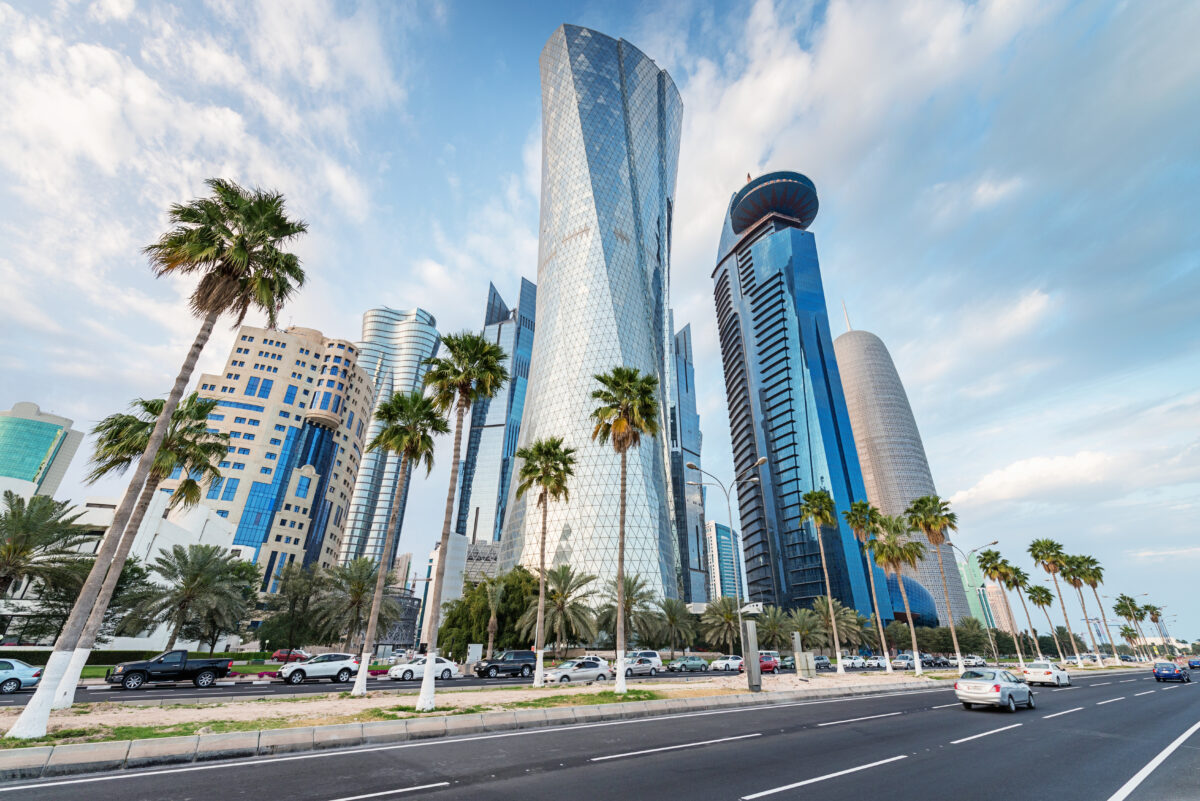Remittance capabilities play a significant role in the Middle East and Africa (MEA) region. How does it, coupled with fintech and wider digital, help combat gaps?
The region is an epicentre for remittances
The MEA region is home to some of the world’s richest nations in the world, in particular with the Gulf Cooperation Council (GCC) region (Saudi Arabia, Oman, Bahrain, Kuwait, United Arab Emirates (UAE) and Qatar) and Israel, which boasts some of the world’s highest gross domestic product (GDP) per capita. In particular, Qatar is often at or near the top as the richest country based on GDP per capita, with the UAE and Israel not too far behind on the global list.
On the opposite spectrum, the MEA region, notably in parts of the African continent, is home to the world’s poorest countries based on the same metric. 19 of the 20 poorest countries in the world are in the MEA region (all of those in the African continent).
This uniqueness of having the world’s richest and poorest countries in the world means that the movement of people – both to seek and to give economic opportunities is busy in the MEA region as it overall provides both. As a result, the remittances corridor in terms of both sending money and receiving money is some of the world’s busiest and there was an MEA country at least in each of the top five.
For example – in terms of outflow – in 2021 based on available data, the top five source countries for remittance outflows were the United States at $74.6billion, second-place Saudi Arabia at $40.7billion, China at third place at $22.9billion, Russia in fourth place at $16.8billion and Luxembourg in fifth place at $15.6billion.
In terms of inflow of remittances, Egypt (in fifth) was the MEA country on the list with India India in first place at almost $90billion, Mexico in second place at $54billion, China in third place at $53billion, the Philippines at $37billion, and Egypt at $32billion.
With respect to remittances as a share of GDP, MEA country led the list at 54 per cent followed by Tonga at 44 per cent, Tajikistan at 34 per cent, the Kyrgyz Republic at 33 per cent and Samoa at fifth at 32 per cent. To note with the former overall top five, the other rankers such as the Philippines, India and Egypt in particular – have significant numbers of their compatriots overseas in the MEA region notably in the GCC region.
To highlight – remittances are not solely a blue-collar worker concept as also the middle and upper class who reside abroad will generally send money back to their home countries and/or their loved ones.
Another thing to note – despite being a developed economy it doesn’t also necessarily mean that the country would have its own fair share of emigrants due to various reasons.
This was highlighted in The Fintech Times‘ previous ‘Fintech: the Middle East and Africa 2021 Report‘ with Israel. It was highlighted in the ‘Leaving the Promised Land — A look at Israel’s Emigration Challenge’ report, released by the Shoresh Institution for Socioeconomic Research, revealed that for every Israeli with an academic degree who returned to the country in 2014, 2.6 Israeli academics emigrated (in 2017 that figure went up to 4.5). The Startup Nation has often seen much of that talent and innovation go to the United States, specifically.
Remittance activities in the region have overall been traditional

The ‘traditional’ mindset – one can argue – has been in many parts due to the lack of access to financial services – aka the unbanked and financially excluded – that the region has faced. For example, it was estimated that in 2018 in the Middle East and North Africa (MENA) region that over half of the population was unbanked.
This has resulted in many of them resorting to traditional money houses and exchanges that will charge high fees to wire money overseas; on average, globally, currency conversions and fees amount to seven per cent of the total amounts sent according to the World Bank on average.
To note though, despite this, it often resorts to the sole option as the overseas worker might not only have access to a bank account in the adopted country but also in his/her home country as well.
And, if they can which unfortunately many blue collars will not, banks generally globally will large the most in fees for foreign transactions. Therefore, whether it be banks or money exchanges or other means, the fees are negative. After all, for all socio-economic backgrounds and in particular, a blue-collar worker where seven per cent, for instance, is taken just in fees, how can that be alleviated so then their hard-earned wages go to their home countries and loved ones?
Here comes fintech and wider digital solutions.
Fintech and wider digital solutions disrupting fintech have impacted the global remittances industry
The rise of fintech globally has made its impact on the global remittances industry and can see its impact in the MEA region as a whole. For instance:
- Access via mobile phones – for a region like MEA with an overall high rate of mobile penetration globally, the ability to bypass a traditional exchange house and go direct to the ‘action’ via a smartphone or even a basic mobile phone, as what has been seen notably in East Africa with basic USSD technology, that remittances can thrive.
- Lower exchange rates – for various reasons but mainly due to its lower operating costs and less physical footprint – fintechs can pass on their savings to consumers which can help ease the traditional average seven per cent fees. Although fintechs are like any business, their less physical footprint can allow for lower operating costs that can be passed down. Also, their cost-saving and digital footprint can help bring lower fees (in some cases none at all) to the consumer.
- Options overall – fintechs have offered options for people that don’t necessarily correspond with a simple, for example, “I’ll exchange my Qatari Dinar for Filipino Pesos.” Fintech-powered remittance apps have given customers a different variety of payment modes. This includes various credit and debit cards (with those to do may often levy card payments). In addition, besides bank transfers, other potential options can be Google Pay, Venmo, Apple Pay – to name a few. Also, there has even been, coupled with its own general rise, the growth of other currencies aka cryptocurrencies that have been other remittance options.
Examples of fintechs in MEA with remittances

This has included non-MEA solutions that have brought solutions to the region as well as MEA-born ones as well. Also, whether it be traditional exchange houses and/or purely fintechs and other digital solutions, the ecosystem has adapted to embrace its digitalisation of it, going in parallel with the wider popularity of digital transformation.
For example, London-headquartered TransferWise, now known as Wise, in 2020 expanded to the MENA region with the launch of its low-cost cross-border online money transfer service in the UAE, by opening an office in the Abu Dhabi Global Market (ADGM).
There are also those in the traditional remittance space adapting and embracing the trend. For example, in October last year, Western Union announced that clients of KCB Bank Kenya, Diamond Trust Bank and the Kenya Post Office Savings Bank would be able to send and receive money via their mobile banking apps. Competitor MoneyGram last December (with no relation but coincidence) partnered with urpay (a digital wallet powered by Saudi Arabia-based Neo Leap) on cross-border money transfers.
In terms of fintechs, examples abound but to spotlight on say, the UAE for example, they include the likes of Denarii, EMQ, NOW, REMITR, Wise and Xare.
Covid has changed much of this with the rise in digital beforehand
Due to the complications of the pandemic, in particular, with its early days when it was difficult due to lockdowns to leave ones at home, have further solidified the importance of digital solutions that were happening already in the pre-pandemic world.
In particular with remittances, for those with limited or no access to financial institutions, the dependence on the likes of fintech and/or fintech and/or digitally-powered solutions helped loved ones who were abroad to send money back home.
With the overall restrictions and coupled with the instant rapid decline in sectors that traditionally require face-to-face and generally a blue-collar workforce like hospitality and tourism, it’s interesting to see that the global remittances flow of money, even in 2020, wasn’t as badly hit.
To spotlight, despite the pandemic, according to KNOMAD, the latest Migration and Development Brief, remittance flows in low and middle-income economies remained resilient in 2020 by registering a smaller decline than previously projected.
This was $540billion in 2020, only 1.6 per cent below the 2019 figure of $548billion. To note, this decline in 2020 was much lower than the one during the 2009 Global Financial Crisis, which was at nearly five per cent (4.8). It was also far lower than the fall in foreign direct investment (FDI) flows to low- and middle-income countries, which, excluding flows to China, fell by over 30 per cent in 2020.
In other words, despite the challenges that the pandemic brought, right before March 2020 the world was generally in a great state where despite the challenges mid-year that there was much resilience in the overall global population across various aspects of behaviour – remittances being one of them.




